You will find a few basic soccer rules that coaches and parents should be familiar with. Share this page with the parents of the players of your team to help educate them on these soccer rules.
Hand ball
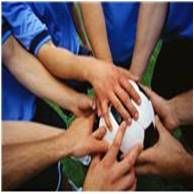
The rule for a hand ball includes using any part of the body from the tips of the fingers to the shoulder. The proper way to look at this soccer rule is that a player cannot “handle” the ball. A ball that is kicked and hits a player’s hand or arm is not a hand ball.
This means that the referee must use his or her own judgment to some extent in determining whether or not a hand ball is accidental contact or a purposeful attempt to gain an advantage.
Put another way, the referee must determine if the play was “ball to hand (legal)” or “hand to ball (illegal)”
Believe it or not, there is also a situation in which the goalie cannot use his/her hands. This is sometimes called the back-pass rule. Goalkeepers cannot pick up a pass by the feet of one of their teammates. In this case, the goalkeeper must use his feet. Infraction of this soccer rule will result in an indirect kick from the point of the infraction.

Equipment
The basic equipment for soccer required by the FIFA Laws of the Game are: a jersey or shirt, shorts, stockings, shinguards, footwear. Most youth recreational soccer leagues will provide everything but the shinguards, footwear & ball.
According to FIFA, shinguards should be “covered entirely by the stockings, made of a suitable material (rubber, plastic, or similar substance), and provide a reasonable degree of protection. This leaves a lot of wiggle room! Most soccer leagues will not allow a person to play or practice soccer without shin guards. Purchasing good shin guards should be a top priority for every parent.

Earrings & Other Things:
There is also this general safety clause in the FIFA rules:
A player must not use equipment or wear anything
which is dangerous to himself or another player.
No necklaces, earrings, nose rings, belly rings, bracelets, or tiaras. Soft “scrunchies” in the hair are generally allowed as are soft head stockings. If a child just had their ears pieced, the studs should be covered with tape or removed. Many leagues will require that the studs be removed. As one fellow commented, is the hole going to grow back in an hour? Lastly, the goalkeeper must wear colors which distinguishes him/her from the other players, the referee, and the assistant referees.
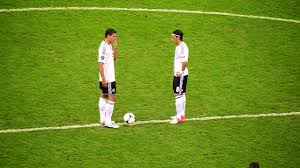
The Kick Off
A kick-off is the way a soccer game is started or restarted:
• at the start of a game
• after a goal has been scored
• at the start of the second half (or each quarter in younger ages)
• at the start of each period of extra time, if used
The ball is placed in the center of the field. All players must be in their own half of the field and the opponents of the team taking the kick-off must be at least 10 yards from the ball. This distance is indicated by the center circle on the field and will vary some with age. Normally the referee will blow his/her whistle to indicate they are ready for the kickoff. The ball is in play when it is kicked.
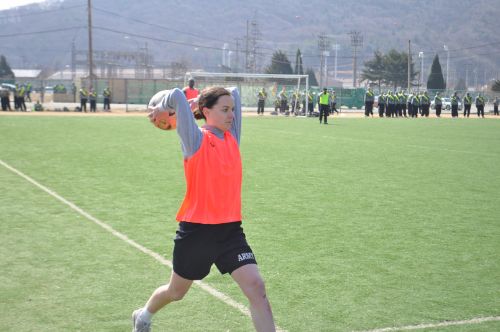
Throw in
A throw-in is taken when the ball crosses a sideline and leaves the field. The two basic soccer rules for a proper throw-in are to have both feet on the ground and to throw the ball with both hands over the head.
To clarify, both feet must be on the ground when the ball is thrown. The player can hop, run, or do cartwheels up to the point where the ball is released but not when the ball is released. Dragging the toes of one foot is considered legal.
Some people also have the impression that a properly thrown ball will not spin. This is not true. A good player can throw the ball with both hands over the head and make the ball spin by applying more or less force to one side of the ball.
As long as the motion is over the head and not to the side this is a completely legal throw. For teaching purposes it is common to allow players under the age of 8 to take more than 1 attempt.
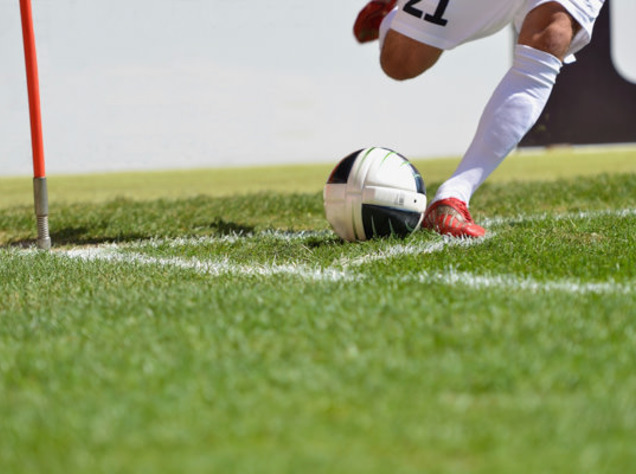
Corner Kick & Goal
Kick
A corner kick or goal kick is taken when the ball leaves the field across a goal line– you know, either end of the field with a goal.
If the offensive team kicks it out, play is restarted with a goal kick. If the defensive team kicks it out, play is restarted with a corner kick.
The goal kick is taken from anywhere inside the “goalie box” as it is affectionately called. It can be taken by any player, not just the goalkeeper.
The corner kick is taken from – yes, you guessed it – the corner nearest to where the ball left the field. You may be confused at times in youth soccer games to see a goal kick retaken. This is because the FIFA soccer rules state that the ball is not back “in play” until it leaves the penalty area, the large box outside of the “goalie box”. If either team touches the ball before it leaves the penalty area the kick must be retaken, and if the ball is not kicked well enough to leave the area, the kick must be retaken.
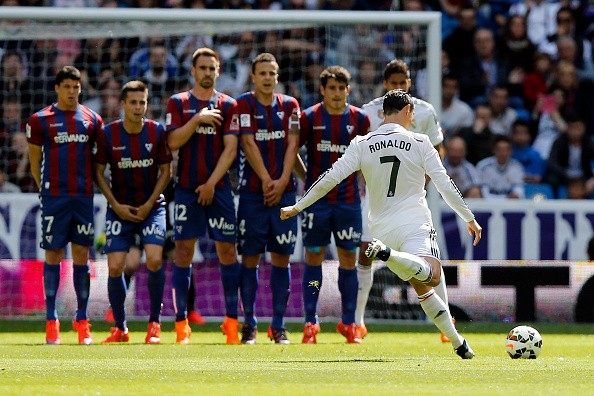
Direct & Indirect
Free Kicks
Direct and indirect kicks are two primary ways that play is restarted after the referee stops play for an infraction. For both of these the ball must be stationary before it is kicked and the opposing players should be a minimum of 10 yards away. The 10 yard allowance is often reduced for the smaller age groups and is left up to the discretion of the referee.
The simple difference between the two is this: On a direct kick you can score by kicking the ball directly into the goal. On an indirect kick you cannot score. An indirect kick must be touched by another player before it can go into the goal – that is the kicker and a second person. As a parent on the sideline, you can tell whether the kick is direct or
indirect by looking at the referee. For an indirect kick, the referee will hold one arm straight up in the air until the second person touches the ball. No arm up, it’s a direct kick.There are many soccer rules around what causes a direct or indirect kick. In general, a direct kick comes from a contact foul or hand ball. Everything else is indirect. Also, be aware that some youth leagues will not allow any direct kicks until after U-8.
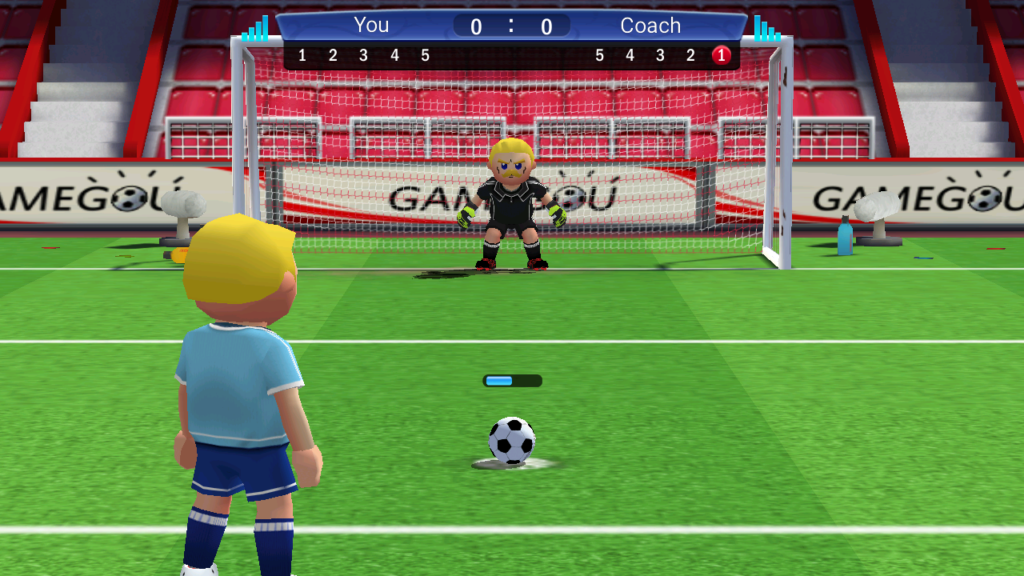
Penalty Kick
A penalty kick results from a contact foul or hand ball by the defending team within the penalty area – the large box on either end of the field. So it’s a type of direct kick also. The ball is placed on the penalty spot or mark, 12 yards in front of the center of the goal.
All players must remain outside the penalty area and the penalty arc until the ball is kicked. The goalkeeper must have both feet on the goal line until the ball is kicked. If after the ball is kicked, it rebounds off of the keeper and stays on the field, the ball is “live” and anyone can play it. If after the ball is kicked, it rebounds off of the goal and stays on the field, the ball is “live” and anyone can play it with the exception of the person who just kicked the ball. If the ball rebounds off of the goal and back into play, the person who kicked the ball cannot play it until the ball is touched by another player – otherwise he/she will be called for two touches.
